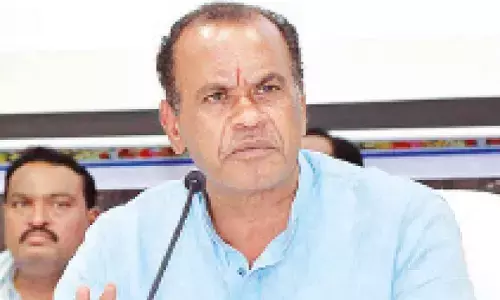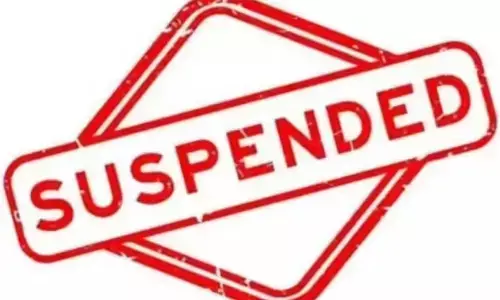India's outsize, putcaste problem exposed during recent soldier funeral

Earlier this week, when upper-caste villagers in the western Uttar Pradesh district of Firozabad tried to prevent the funeral of a Dalit paramilitary trooper killed in a terrorist ambush,
Earlier this week, when upper-caste villagers in the western Uttar Pradesh district of Firozabad tried to prevent the funeral of a Dalit paramilitary trooper killed in a terrorist ambush, it was the latest manifestation of widespread discrimination against 305 million Indians belonging to scheduled castes (SCs) and scheduled tribes (STs).
Upper-caste villagers refused to allow the funeral of Vir Singh, a Nat - a community of now-settled formerly nomadic acrobats who are Dalits, lowest of Hindu castes - on public land, reluctantly relenting after many hours of cajoling by a local bureaucrat. A father of three, Singh, a 35-year veteran of the Central Reserve Police Force, died in Pampore, Kashmir, on June 26, 2016. His family lived in a one-room home with a tin roof, the DNA reported.
More than 1,200 km to the east, in a Kolkata slum peopled exclusively by other outcastes like him, Dharmendra, a “manual scavenger” - an official term for those who manually clean toilets and sewers - for 33 years, explained how he was so used to discrimination that he is barely aware of it. He was not aware that manual scavenging is banned by law, and he had not heard of job reservations for his clan, mathors, people who clean toilets, septic tanks and sewers, often immersed in excreta.
After 68 years of Independence, not only does discrimination endure against Indians from scheduled castes and scheduled tribes - 201 million and 104 million according to Census 2011 - crimes against India’s most marginalised are rising (as the second part of this series will explore).
Despite progress, scheduled castes and scheduled tribes - who together constitute 25.2 per cent of India’s population - continue to trail other Indians. To quantify the gap, IndiaSpend used four criteria: Education, income, land and home ownership and government jobs.
Every so often, even those Dalits who have broken through India’s logjam of caste find it difficult to navigate a society dominated by upper castes. Rohith Vemula, a 25-year-old University of Hyderabad Dalit Phd student - whose January 2016 suicide became a rallying point for those who felt discriminated - referred in his suicide note to the “value of a man” reduced to “his immediate identity and nearest possibility. To a vote. To a number. To a thing.”
EDUCATION
Both scheduled castes (SCs) and scheduled tribes (STs) lag Indian educational indicators, according to Census 2011: 66 per cent of SCs are literate, as are 59 per cent of STs; literacy among the general population is 74 percent.
Reservations have helped improve enrolment rates in higher education, but many students feel the pressure of expectations and subtle discrimination. More than half of all SC, ST and OBC (other backward castes) students felt discrimination, although it was not overt, according to a 2014 survey (reported by DNA) conducted by a student organisation at the Indian Institute of Technology-Powai.
“Government interventions, programmes and policies are helping but they are too little compared to the actual need,” said A. Narayanan, Director of CHANGEIndia, an advocacy based in Chennai. “And privatisation of education is depriving the Dalit.”
INCOME
In 83 per cent of SC households and 86.5 per cent of ST homes, the monthly salary of the highest-earning member was less than Rs 5,000, according to data from 2011 Socio-Economic Caste Census (SECC).
SC and ST households constitute half of India’s “poor, deprived households”, according to this 2011 year pilot survey to identify how many Indians lived below the poverty line. That deprivation is evident in the homes and land that SCs and STs own.
LAND AND HOME
ST land holdings are lowest in some relatively prosperous states, such as Goa, Gujarat and Telangana, where they constitute 13 per cent, 21 per cent and 11 per cent of the population. As for SCs, they own little or no land in Haryana and Chhattisgarh, where they constitute 23 per cent and 14 per cent of the population.
No more than 0.36 per cent of ST and 0.64 per cent of SC households pay income tax, according to 2001 SECC data, the latest available Among the general population, 3.81 per cent pay income tax, as IndiaSpend reported in May 2016.
GOVERNMENT JOBS
There is no data on how many SCs and STs are employed by the private sector, but an analysis of SC/ST representation in government services reveals that despite reservations - 15 per cent of such jobs are reserved for SCs and 7.5 per cent for STs - they lag other Indians.
No more than 0.48 per cent of ST and 0.73 per cent of SC households had a salaried government (both centre and state) job, according to the SECC 2011. In 1994, the latest year for which such data is available, 16.9 per cent of all central government employees were SC and 5.49 per cent were ST - their proportion in the general population.
Do job reservations help or hinder?
There is evidence of some positive impact and no negative impact, according to a 2016 productivity study of the Indian Railways - India’s largest public-sector employer - using data from 1980 and 2002 by two researchers, Ashwini Deshpande from the Delhi School of Economics and Thomas Weisskopf of the University of Michigan.
As for self-employed SCs and STs, their businesses fared “significantly worse” than those owned by upper castes, with 55 per cent of the earnings gap unexplained, implying “greater discrimination”, said another 2015 study from Deshpande.
By Himadri Ghosh
(In arrangement with IndiaSpend.org, a data-driven, non-profit, public interest journalism platform. Himadri Ghosh is a Bangalore-based independent reporter. The views expressed are those of IndiaSpend. The author can be contacted at [email protected])














